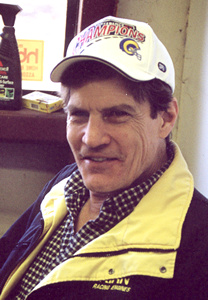|
|
|
|||
|
|
||||
|
I am currently running a basically stock '79 Malibu wagon and I want to build a good motor for it. I bracket race with it (foot brake style). I will get a line lock for it later but my thrill is to have it all natural now. I have access to building 4 different kinds of engines. I have a stock 350 and a stock 400 that I could start from. The engine sizes would be a 373-383-406-409. What I want is a power range that would keep me going all the way through the quarter mile and a little to spare. The camshaft that I have chosen is Crane. It has an average duration of 300/308 degree with a lift of .516/.525". The rpm range is 3400-6800. The intake I was looking at is Edelbrock's Victor Jr. Tall. The rpm range is 3500-8000 with a Holley 750 double pump mechanical secondaries. I will naturally plug the power valves. I also though about putting a one-inch wooden spacer on the carb. I was also going to try and set up a ram air system on it. The heads I was looking at is the Dart Iron Eagle 180 cc intake runner and a 64 cc chamber 2.02/1.06 valves. I was also going to match port both intake and exhaust with a little polshing as an added bonus. The header I want will be a 1 3/4 inch. I am also using a 350 turbo tranny with a 3500 stall converter and a 3.73 gear rear end. The tire size is 29.5 - 10.5 - 15. I am currently running a 13.94 consistently, shifting at 4800 rpm. I launch it at 2500 rpm. With all this in mind, which engine would give me the best performane for my dollar and stay consistent and together longer. I only have one shot at getting it right and staying together. Muddauber
Your camshaft, cylinder head, intake and carburetor choices should work, but could be aided by a 3:90 rear gear. Also, make sure you use the 350 rods, not the 400 rods. The shorter 400 rods hinder the engine's rpm potential. Slight rod modifications are necessary for cam clearance, but worth the trouble. Have the rotating assembly balanced and you'll have to use the 400 Chevy flywheel and harmonic balancer. Hope this helps your project. |
||||
|
Copyright 1999-2001, Drag Racing Online and Racing Net Source |
||||

